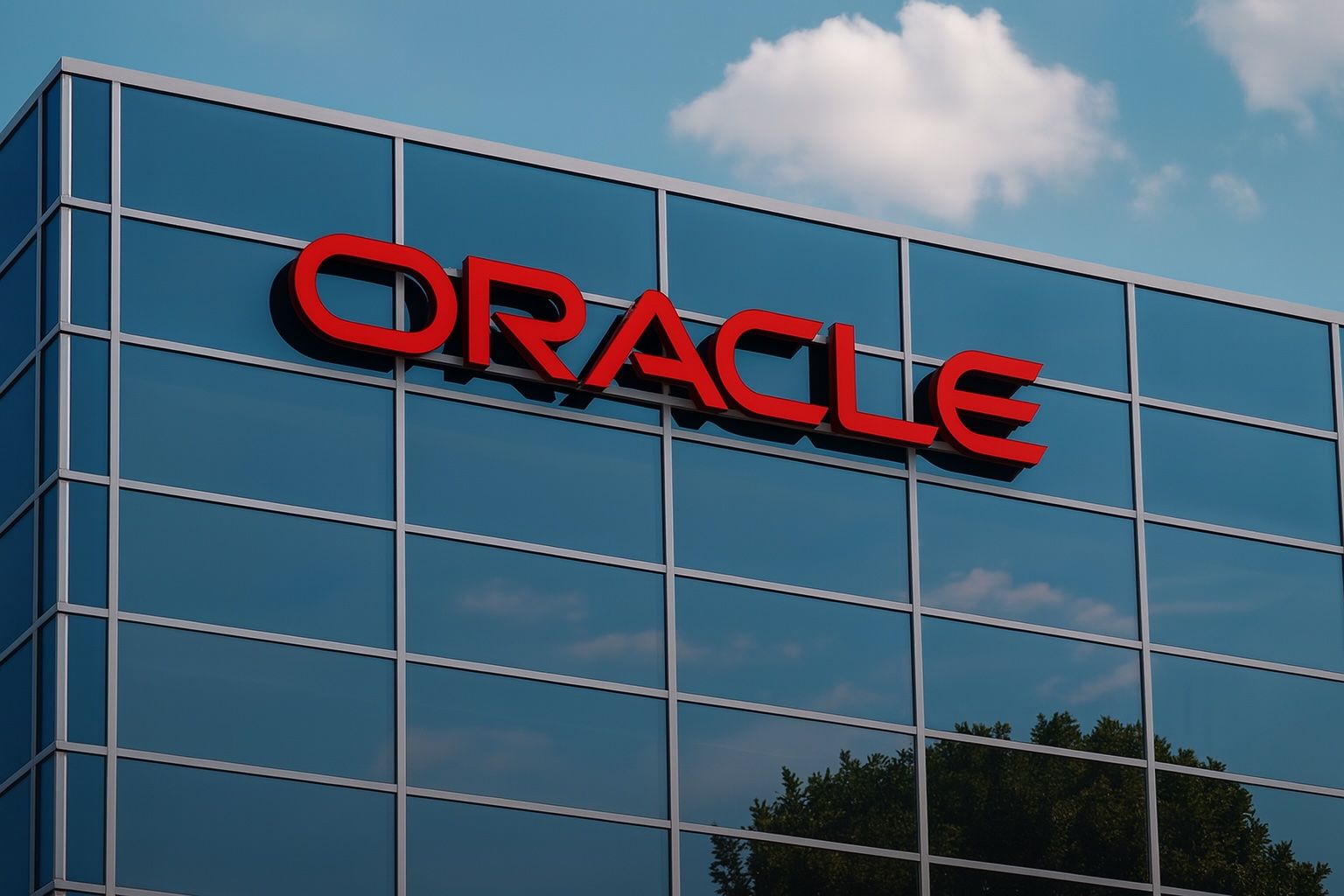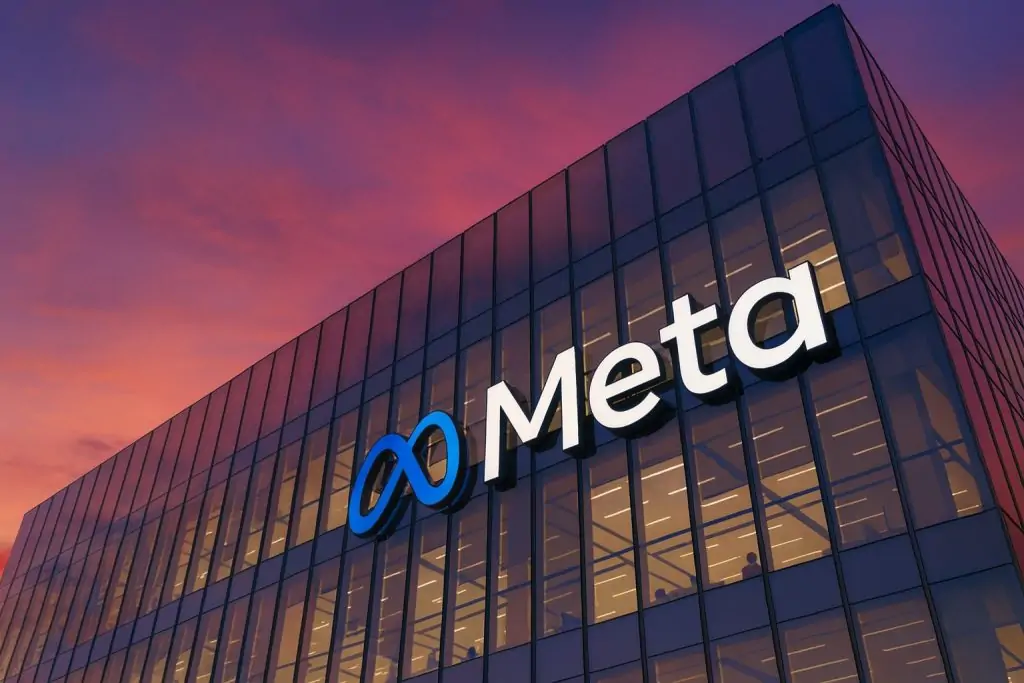Oracle Corporation (NYSE: ORCL) shares were under pressure on Thursday, November 20, 2025, as growing concerns over the company’s AI‑driven debt load and rising credit risk overshadowed a string of positive announcements in its healthcare and defense businesses.
By late Thursday trading, Oracle stock was fluctuating just below $220, down roughly 3–4% from Wednesday’s close of $225.53, after an early move higher that briefly pushed shares above $230. [1] The volatility reflects a tug‑of‑war between bullish analysts betting on an AI and cloud rebound and credit markets increasingly treating Oracle as a high‑leverage proxy for AI risk.
Oracle stock today: price action and recent performance
- Intraday move: ORCL opened around $232 and traded in a wide range between the high‑$210s and mid‑$230s, before slipping back toward the high‑$210s.
- Versus yesterday: Wednesday’s official close was $225.53, capping a 2.3% gain for the prior session. [2]
- Short‑term trend: Over the past month, Oracle shares are down about 18–19%, even after today’s intraday bounce attempts, according to MarketBeat’s performance data. Year‑to‑date the stock remains up roughly 35%, and more than 300% over five years. [3]
- 52‑week range: A MarketBeat institutional snapshot pegs Oracle’s 12‑month low near $118.86 and high around $345.72, highlighting how dramatic the 2025 AI‑driven run‑up has been. [4]
Fundamentally, ORCL now trades on a rich multiple. MarketBeat data puts its price‑to‑earnings ratio a little above 52x, with a market capitalization around $640 billion, and a debt‑to‑equity ratio above 3 on that dataset. [5] Trefis separately estimates Oracle’s price‑to‑sales near 10–11x and P/E above 50x, more than double broad‑market averages. [6]
Those valuations mean every new piece of news—positive or negative—hits the stock harder than it might for a slower‑growing, lower‑multiple company.
Healthcare catalyst: Oracle Health wins TEFCA QHIN status
On the positive side of today’s news flow, Oracle Health notched an important regulatory victory.
Oracle announced that Oracle Health Information Network Inc. has been designated a Qualified Health Information Network (QHIN) under the U.S. Trusted Exchange Framework and Common Agreement (TEFCA). [7]
Key points from the announcement:
- Single connection for interoperability: Oracle Health customers—primarily hospitals and health systems—can now use Oracle Health Information Network as a single point of connectivity to exchange patient data with other designated QHINs, providers, payers and government agencies. This reduces the need to join multiple exchange networks and helps create a more complete longitudinal patient record. [8]
- Runs on Oracle Cloud Infrastructure (OCI): The network is powered by Oracle’s cloud platform, leveraging its scalability, security and performance to move clinical data faster and more reliably, while reducing dependence on third‑party interoperability vendors. [9]
- Free, low‑friction onboarding: Oracle Health says customers can opt in at no extra cost via Oracle Health Connection Hub, with no additional setup or consulting projects required, a design meant to accelerate adoption. [10]
- Strategic narrative: Oracle executives describe QHIN status as a foundation for AI‑driven healthcare, arguing that interoperable data is essential for quality measurement, value‑based care, and advanced analytics. [11]
The move fits into Oracle’s broader healthcare push. After acquiring electronic health‑records giant Cerner in 2022 for roughly $28 billion and rebranding it as Oracle Health, the company has been positioning itself as a cloud‑and‑AI‑first healthcare infrastructure provider. [12]
New AI‑powered EHR goes live with regulatory approvals
Also today, healthcare industry outlet Advisory Board reported that Oracle’s new AI‑powered electronic health record (EHR) has cleared key regulatory hurdles and is now ready for ambulatory providers, with acute‑care features planned for 2026. [13]
According to their briefing:
- The system was built from the ground up on Oracle Cloud Infrastructure, separate from Cerner’s legacy platform.
- It features a clinical AI agent, voice‑activated navigation, and “contextual and conversational” AI search designed to dramatically reduce the number of clicks and screens clinicians must navigate. [14]
- The new EHR has received ONC Health IT certification and met DEA requirements for e‑prescribing controlled substances, confirming it meets U.S. standards for security, functionality and interoperability in clinical use. [15]
Taken together with the QHIN designation, Oracle is trying to show that its healthcare acquisition is evolving from a costly integration project into a full‑stack, AI‑enabled health platform, which could eventually support higher‑margin cloud and data services.
For traders, this is clearly bullish narrative fuel—but today it is being drowned out by growing worries on the balance‑sheet side.
AI boom, AI debt: Oracle becomes a credit‑market risk barometer
The loudest story around Oracle today is not about products; it’s about debt and credit risk.
A detailed note from GuruFocus describes Oracle as an emerging “AI risk barometer” in credit markets. The article highlights that: [16]
- Oracle has borrowed heavily to fund AI infrastructure, including an $18 billion bond sale in September, one of the largest corporate bond deals of the year.
- The cost of insuring Oracle’s debt via five‑year credit default swaps (CDS) has roughly doubled, recently peaking near 1.11% per year, according to ICE Data Services.
- CDS trading volume linked to Oracle has surged to about $5 billion over seven weeks, compared with just over $200 million a year ago—evidence that traders are increasingly using ORCL as a proxy to hedge or short the AI boom.
- Oracle’s equity market value has fallen by about one‑third since September, reflecting investor anxiety over whether AI infrastructure spending will generate enough cash flow to comfortably service that debt. [17]
A separate, AI‑assisted analysis from AInvest calls the spike in Oracle’s CDS spreads a possible “canary in the coal mine” for highly leveraged AI plays, noting that: [18]
- Rising spreads on Oracle’s CDS are being watched as an early warning indicator, similar in spirit to pre‑2008 bank credit stress.
- The AI sector more broadly is taking on substantial fixed costs through AI‑as‑a‑service (AIaaS) cloud models and long‑dated infrastructure investments, making companies sensitive to interest‑rate and refinancing risks.
And in The Wall Street Journal, a feature in Thursday’s print edition described Oracle as a former Wall Street AI darling now “hit hard by debt jitters”, underscoring how quickly sentiment has swung from euphoria to caution. [19]
Wall Street is split: $400 bull case vs. $158 bear case
Today’s headlines also underline just how polarised analyst opinion has become on ORCL.
The bullish camp: Jefferies’ $400 target and defense AI deal
In a note highlighted by Insider Monkey, Jefferies analyst Brent Thill reaffirmed a Buy rating on Oracle and set a $400 price target, implying around 80% upside from current levels. [20]
The bullish thesis leans on:
- Oracle as one of the top beneficiaries of AI and data‑center spending, particularly through its high‑performance Oracle Cloud Infrastructure (OCI). [21]
- A new strategic partnership with “Defense Technologies” (a defense‑focused partner) announced earlier this month, aimed at delivering sovereign cloud and AI solutions for national security and defense customers. The collaboration is designed to let defense clients deploy AI‑enabled software at scale using Oracle’s distributed cloud, while maintaining sovereignty and security. [22]
In other words, the Jefferies view is that Oracle’s AI and defense cloud pipeline is strong enough to justify today’s lofty multiples—and that the recent pullback is an opportunity.
The valuation skeptics: Trefis and Seeking Alpha push back
On the other side, several pieces published today argue that investors may be overpaying for Oracle’s growth.
- A new Trefis deep dive titled “Oracle Stock To $158?” notes that ORCL has fallen about 18% over the past month and was recently trading around $225.53 when they ran their numbers. Their multi‑factor model concludes the stock looks “relatively expensive,” with a fair‑value estimate near $158—roughly 30% below current levels. [23]
- Trefis flags valuation as “Very High,” with Oracle trading at over 10x sales and 50x earnings, versus much lower S&P 500 averages, even though growth and profitability are strong. It also points out that Oracle carries roughly $105 billion in debt versus about $11 billion in cash, although the company’s operating margins and cash flows remain robust. [24]
- A new Seeking Alpha opinion piece, “Not Every Dip Is An Opportunity—Oracle Remains The Weakest Link (ORCL),” argues that the recent slide may not be a buy‑the‑dip moment. The author cites heavy dependence on cloud and OpenAI‑linked AI growth, concerns about deteriorating cash flow, and an already‑“weak” valuation profile compared with other mega‑cap tech options. [25]
Together, these voices sketch a bearish case where high leverage + high valuation + rising CDS spreads leave little margin for error if AI spending slows or competition intensifies.
Institutional flows: one fund trims, giants add
On the institutional side, today’s news includes fresh 13F data:
- Telligent Fund LP disclosed that it cut its Oracle position by 42.9% in the second quarter, reducing its holdings from 7,000 to 4,000 shares, worth about $875,000 at the end of the period. [26]
- However, the same MarketBeat article notes that large institutions are still net buyers overall:
- Vanguard Group increased its stake by about 2.1% to more than 164 million shares.
- Several other big asset managers, including Northern Trust, UBS Asset Management, Amundi and Polen Capital, also added modestly to their Oracle positions. [27]
Roughly 42% of Oracle’s float is owned by institutions and hedge funds, underscoring how heavily the stock is embedded in professional portfolios. [28]
For retail investors, that mix suggests that short‑term moves can be driven by institutional risk‑management decisions—for example, trimming high‑beta AI exposure—not just company‑specific news.
How today’s news fits into the bigger Oracle story
Putting all of this together, today’s ORCL narrative looks like this:
- Fundamentals remain strong.
Oracle is still delivering double‑digit revenue growth (Trefis estimates around 10%+ annual top‑line growth with operating margins above 30%), driven by cloud infrastructure and applications. [29] - Healthcare is becoming a real differentiator.
With QHIN status, an ONC‑certified AI‑powered EHR, and the Cerner rebrand to Oracle Health, the company is building a deep moat in health‑care data and workflows, an area many AI competitors can’t easily replicate. [30] - But the AI‑debt trade is now front and center.
Massive bond issuance and big AI infrastructure bets have made Oracle a proxy for AI credit risk, with CDS spreads and trading volumes spiking as investors hedge against the possibility that AI returns arrive slower than hoped. [31] - Valuation is the main fault line.
Bulls argue that Oracle’s role in AI data centers, sovereign cloud, defense, and healthcare justifies premium multiples and Jefferies’ $400 price target. [32] Bears counter that, at more than 10x sales and 50x earnings, any disappointment on growth or AI adoption could see the stock revert toward the $150–$160 range flagged by Trefis and other skeptics. [33] - Next big catalyst: December earnings.
Multiple earnings calendars currently list Oracle’s fiscal Q2 2026 results for around December 8, 2025, though dates are still subject to change. [34] That report—and the company’s updated guidance on AI and cloud demand—will likely be the next major inflection point for ORCL.
What to watch if you follow Oracle stock
For readers tracking Oracle stock today and in the coming weeks, key things to monitor include:
- Credit markets: Do Oracle’s CDS spreads stabilize or keep widening? Persistent stress here would reinforce the “AI bubble risk hedge” narrative. [35]
- AI and cloud demand signals: Any commentary from major AI customers (including partners like OpenAI and SoftBank‑linked projects) could change sentiment quickly, either validating Oracle’s AI spending or fueling fears of overcapacity. [36]
- Healthcare traction: Adoption of the new AI‑powered EHR and QHIN‑enabled interoperability deals will show whether Oracle Health is becoming a growth engine rather than just an expensive acquisition. [37]
- Valuation resets: Fresh analyst notes—either endorsing Jefferies’ upside case or aligning with Trefis’ downside estimate—could shift where the market thinks “fair value” sits. [38]
Nothing in today’s news definitively settles whether Oracle stock is a bargain AI infrastructure play or a crowded, over‑levered trade—but it does clarify the battle lines. For now, the market is reacting by marking the shares down, even as Oracle racks up wins in healthcare and defense AI.
As always, this article is for information and news purposes only and is not personalized investment advice. Anyone considering ORCL should weigh their own risk tolerance, time horizon, and portfolio needs, and, if necessary, consult a qualified financial advisor.
References
1. www.investing.com, 2. www.investing.com, 3. www.marketbeat.com, 4. www.marketbeat.com, 5. www.marketbeat.com, 6. www.trefis.com, 7. finviz.com, 8. finviz.com, 9. finviz.com, 10. finviz.com, 11. finviz.com, 12. www.oracle.com, 13. www.advisory.com, 14. www.advisory.com, 15. www.advisory.com, 16. www.gurufocus.com, 17. www.gurufocus.com, 18. www.ainvest.com, 19. www.wsj.com, 20. www.insidermonkey.com, 21. www.insidermonkey.com, 22. www.insidermonkey.com, 23. www.trefis.com, 24. www.trefis.com, 25. seekingalpha.com, 26. www.marketbeat.com, 27. www.marketbeat.com, 28. www.marketbeat.com, 29. www.trefis.com, 30. finviz.com, 31. www.gurufocus.com, 32. www.insidermonkey.com, 33. www.trefis.com, 34. public.com, 35. www.gurufocus.com, 36. www.gurufocus.com, 37. finviz.com, 38. www.insidermonkey.com







